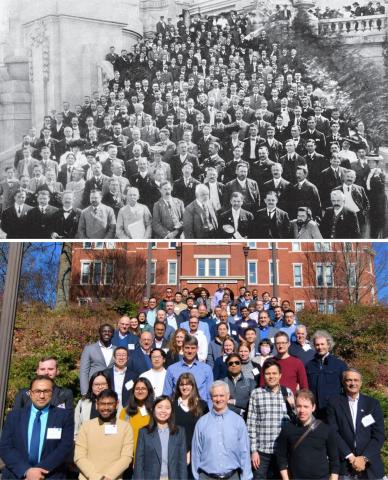An interdisciplinary research team comprised of engineers and historians from the Georgia Institute of Technology, the University of Houston, and the University of Minnesota are hoping to shape the future of electric power grids by studying and cataloguing the field’s robust history.
The North American power grid is undergoing a generational transformation. Amid this change, an interdisciplinary research team of engineers and historians seeks to uncover the untold stories behind the algorithms and power systems architecture that have shaped the complex technological and social history of this key infrastructure.
“You can’t connect the dots looking forward; you can only connect them looking backwards.” These words, famously attributed to Steve Jobs, address the broad truth that only through intentional reflection and examination can we learn from the past.
With this in mind, an interdisciplinary research team comprised of engineers and historians from the Georgia Institute of Technology, the University of Houston, and the University of Minnesota are hoping to shape the future of electric power grids by studying and cataloguing the field’s robust history during a two-year study funded by the Alfred P. Sloan Foundation.
“While electrical engineering is at the forefront of many of today’s technological advancements, a critical step in the process of innovative and cutting-edge research is working to understand the past,” said Dan Molzahn, assistant professor in the Georgia Tech School of Electrical and Computer Engineering and the project’s principal investigator.
The group’s project, "Algorithms and Power Systems Architecture: Using Historical Analysis to Envision a Sustainable Future", emerges out of the Sloan Foundation’s emphasis to award historical scholarship projects that look to understand the contemporary context of scientific research and inform current and future research and policy practices. The study will examine the relatively invisible, yet central, role of the algorithms 20th-century engineers developed to provide optimization and control of the electric power grid and the ways in which these algorithms might impact the cleaner grid of the future.
“Clarifying how invisible technologies [like algorithms] became established in large and complex power systems is the ultimate goal of the project,” said Molzahn. “As algorithms became thoroughly naturalized within power systems architecture, they set the boundaries and established the scope of possibility; this can restrict innovation across the technology spectrum.”
The research team — two historians and two engineers — represents an innovative alliance of technical, historical, and public policy approaches. In addition to Molzahn, the team includes Sairaj Dhople, associate professor of electrical and computer engineering at the University of Minnesota (UMN); Julie Cohn, a research historian at the Center for Public History at the University of Houston (UH); and Monica Perales, associate professor of history and director of the Center for Public History at UH.
The project comes at a time when power grids are in the throes of new demands and transformation. As a result of aging technology and regulatory structures that impede upgrades of essential power infrastructure, current grids are inadequate in integrating renewable energy sources at the scale the market requires. Energy providers and researchers are also looking for ways to guard power systems against cyber assaults, as well as against an increased risk of extreme weather events due to climate change — the average overall duration of power interruptions due to weather in the U.S. doubled since 2015, according to the U.S. Department of Energy.
“The opportunities and challenges of widespread electrification are front and center for the public. Debates about climate change, opposition to large-scale energy infrastructure, and periodic weather-related power outages appear in the news regularly,” said Cohn, who is an expert on the development of the North American electric power grid and author of the book “The Grid” on the topic.
A particularly important part of the project is collecting the oral history of individuals who were instrumental in the development, adoption, and application of algorithms in North America. The team will train history and engineering graduate students to conduct approximately 50 interviews with members of the National Academy of Engineering, IEEE Fellows, and prominent power systems engineers.
“The interviews themselves will be the best way to make this project relevant for a non-technical audience,” said Perales, an expert on oral history methods. “When you hear a person tell their story about why they became interested in working on the power system, it is often more than a ‘technical’ story. They offer insight into the ‘why’, which is always compelling.”
The interviews will be archived at UH and the IEEE History Center, and will eventually be made available to other researchers and the public. The team will use the interviews as important source information to produce a podcast that interprets the highly technical history of algorithms and power systems architecture for a broad audience, especially those interested in climate change and sustainability.
The completed history will then be leveraged in engineering courses taught by Molzahn at Tech and Dhople at the UM with the hope that other institutions will utilize the team’s findings to provide appropriate historical context in their power engineering courses.
__
LISTEN NOW!
Discovering Power in the Past: The Algorithms and Power Systems Architecture Project from the University of Houston's "Public Historians at Work" podcast.
